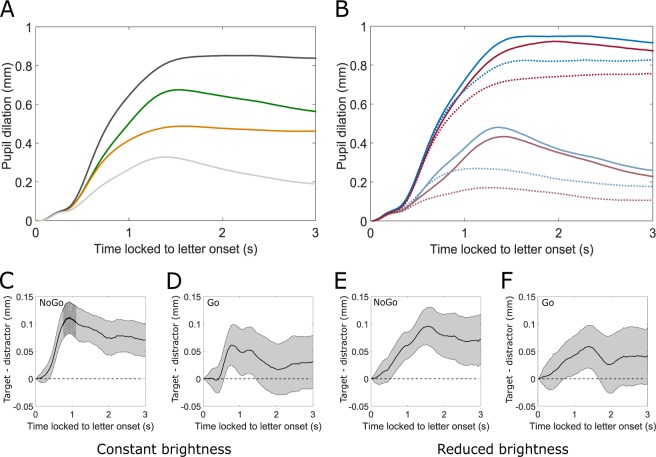Figure 2.
Stimulus-locked pupil data. (A) Changes in pupil diameter for constant brightness condition (light gray), reduced brightness condition (black), Go- (green), and NoGo-condition (orange). (B) Pupil diameter for target-trials (blue) and distractor-trials (red) show that pupil always responded stronger when targets were present. This effect could be monitored under both brightness conditions (upper four lines: reduced brightness) and irrespective of the Go/NoGo task (Go: solid lines, NoGo: dotted lines). (C–F) Differences between target and distractor together with functional confidence intervals. If zero is not contained in the CI, changes are significantly different to a FDR-corrected α = 0.05. All conditions showed clearly significant differences between target- and distractor-trials. (C) Constant brightness, NoGo. (D) Constant brightness, Go. (E) Reduced brightness, NoGo. (F) Reduced brightness, Go.

